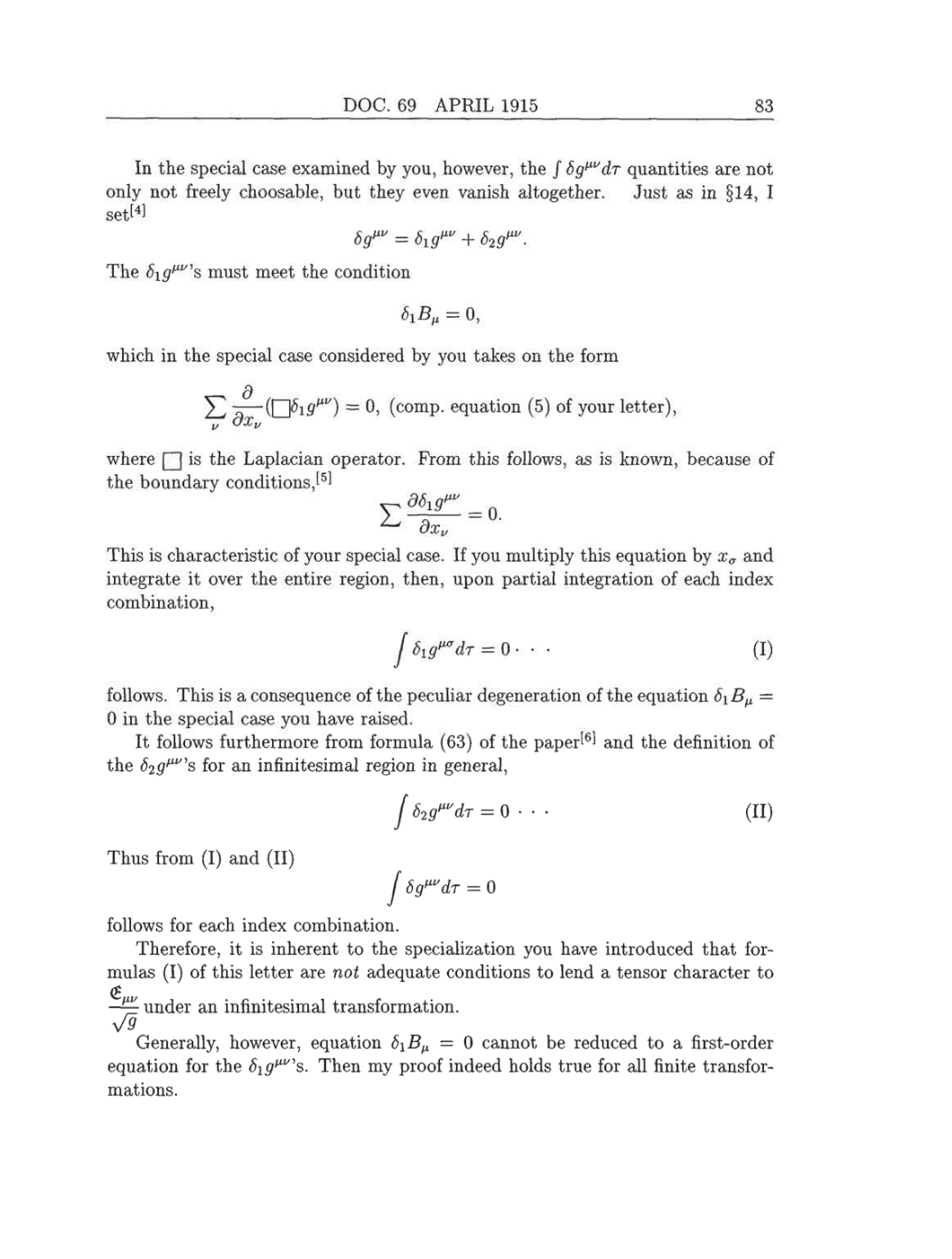DOC.
69
APRIL
1915 83
In
the
special
case
examined
by you, however,
the
ƒSguvdT
quantities
are
not
only not freely choosable,
but
they
even
vanish
altogether.
Just
as
in
§14,
I
set[4]
àguv
=
61guv
+
d2guv.
The
S1guv’s
must
meet
the
condition
81Bu
=
0,
which in
the
special
case
considered
by you
takes
on
the
form
y,--(ypi9^)
=
0,
(comp.
equation
(5)
of
your
letter),
where
Q
is
the
Laplacian operator.
From this
follows, as
is
known,
because
of
the
boundary
conditions,[5]
^
dx
This
is
characteristic
of
your special
case.
If
you multiply
this
equation by xo
and
integrate
it
over
the
entire
region,
then,
upon
partial integration
of each index
combination,
ƒ
6ig^dr
=
0
...
(I)
follows.
This
is
a
consequence
of the
peculiar degeneration
of the
equation
61Bu
=
0
in
the
special
case you
have raised.
It
follows
furthermore
from formula
(63)
of
the
paper[6]
and the definition
of
the
ô2guv’s
for
an
infinitesimal
region
in
general,
ƒ
hsTdr
=
0
...
(II)
Thus from
(I)
and
(II)
ƒ
Sgudr
=
0
follows
for each index combination.
Therefore,
it
is
inherent to
the
specialization you
have
introduced
that
for-
mulas
(I)
of
this letter
are
not
adequate
conditions to lend
a
tensor
character
to
Euv/9
under
an
infinitesimal
transformation.
Generally, however, equation
61Bu
=
0
cannot be reduced to
a
first-order
equation
for
the
S1guv’s.
Then
my proof
indeed holds true for all finite transfor-
mations.
